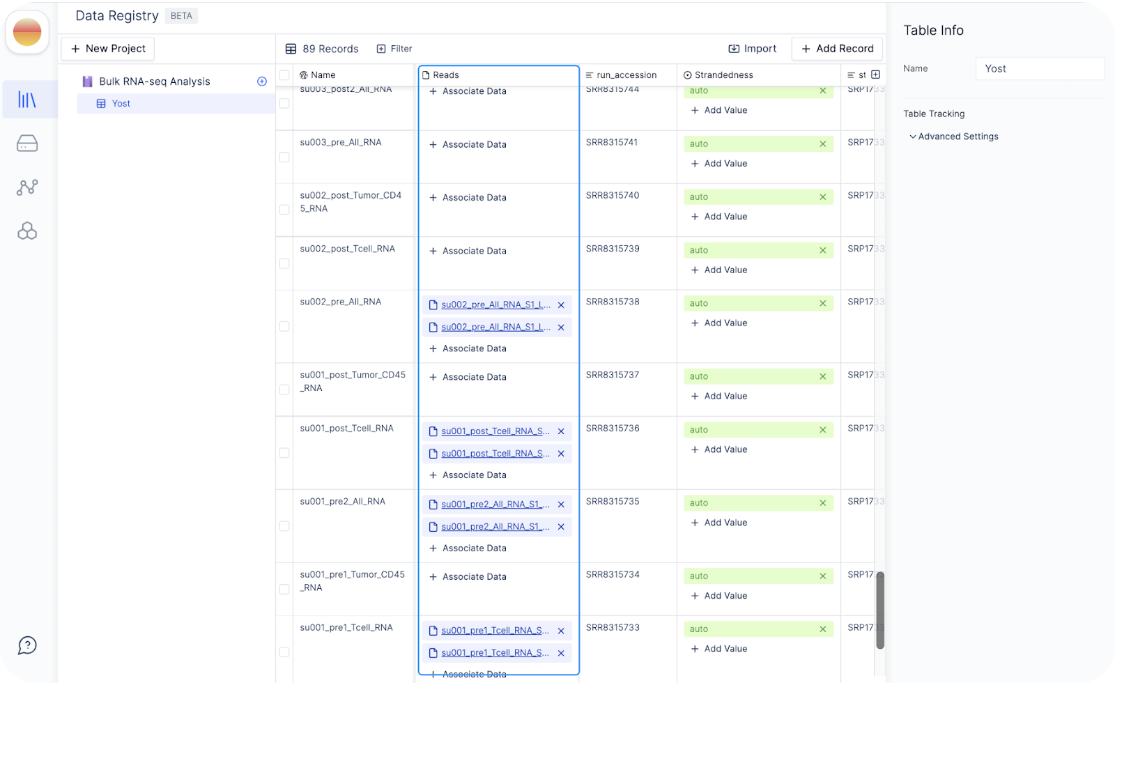1
To bulk link sequencing files on Latch with records in registry table, click “Import” and select “Bulk Import Sequencing Data”.
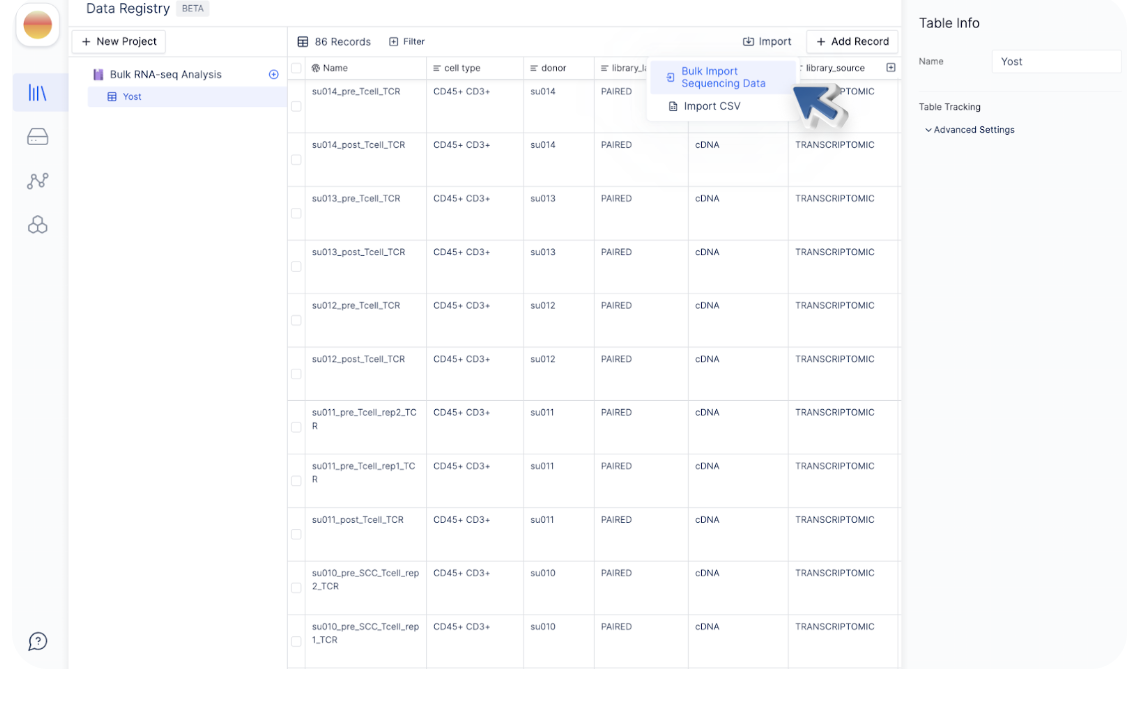
2
To select multiple folders, click on the first folder, hold Shift on your keyboard, and select the final folder that contains the sequencing files you want to import. Then, choose “Select”.
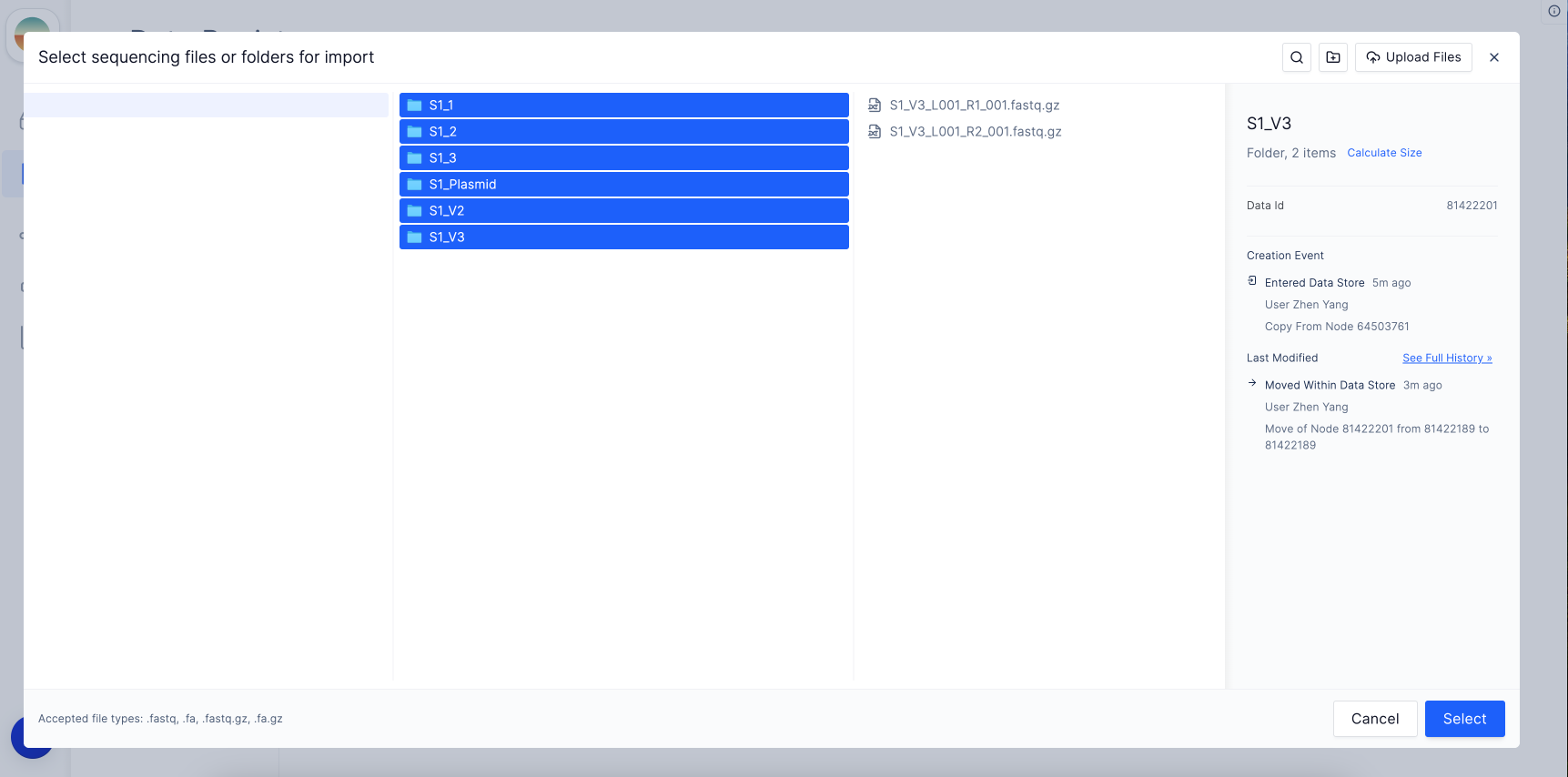
3
Click on “Autodetect” to see how Latch infers sample names from file names.
For example, the files 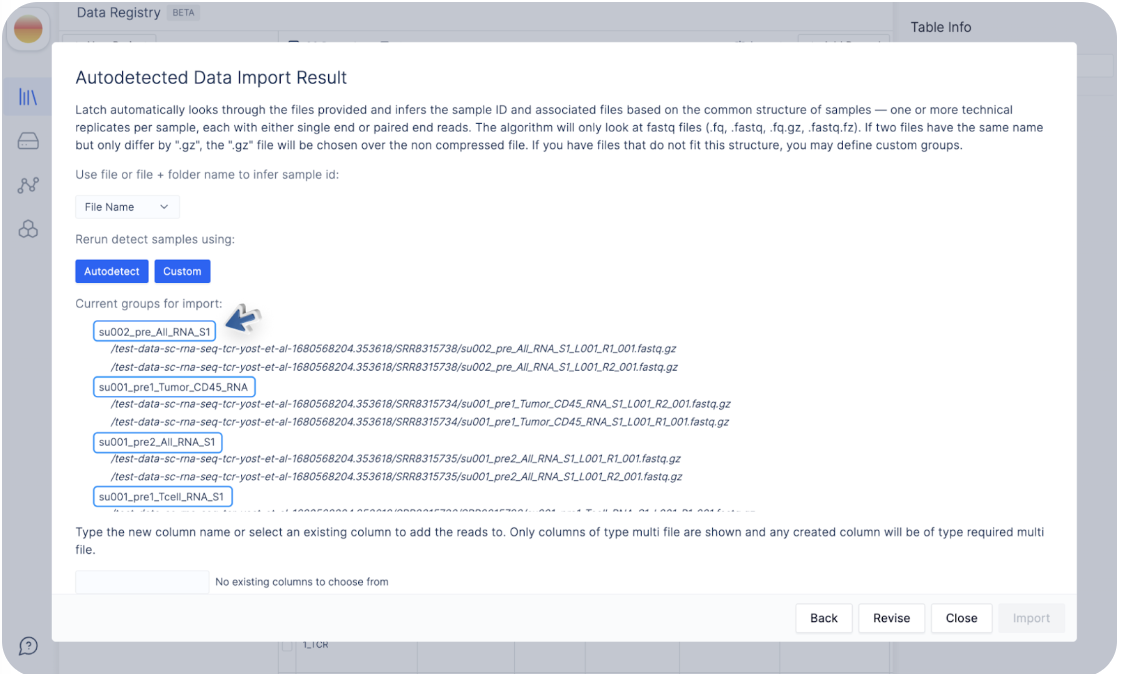
/test-data-sc-rna-seq-tcr-yost-et-al-1680568204.353618/SRR8315738/su002_pre_All_RNA_S1_L001_R1_001.fastq.gz and /test-data-sc-rna-seq-tcr-yost-et-al-1680568204.353618/SRR8315738/su002_pre_All_RNA_S1_L001_R2_001.fastq.gz have the sample names su002_pre_All_RNA_S1 as that is the common prefix between both files.
4
Let’s say we are not happy with these sample names, and would like the samples to be named `su002_pre_All_RNA` instead of `su002_pre_All_RNA_S1`.
To do so, we can click on “Custom”.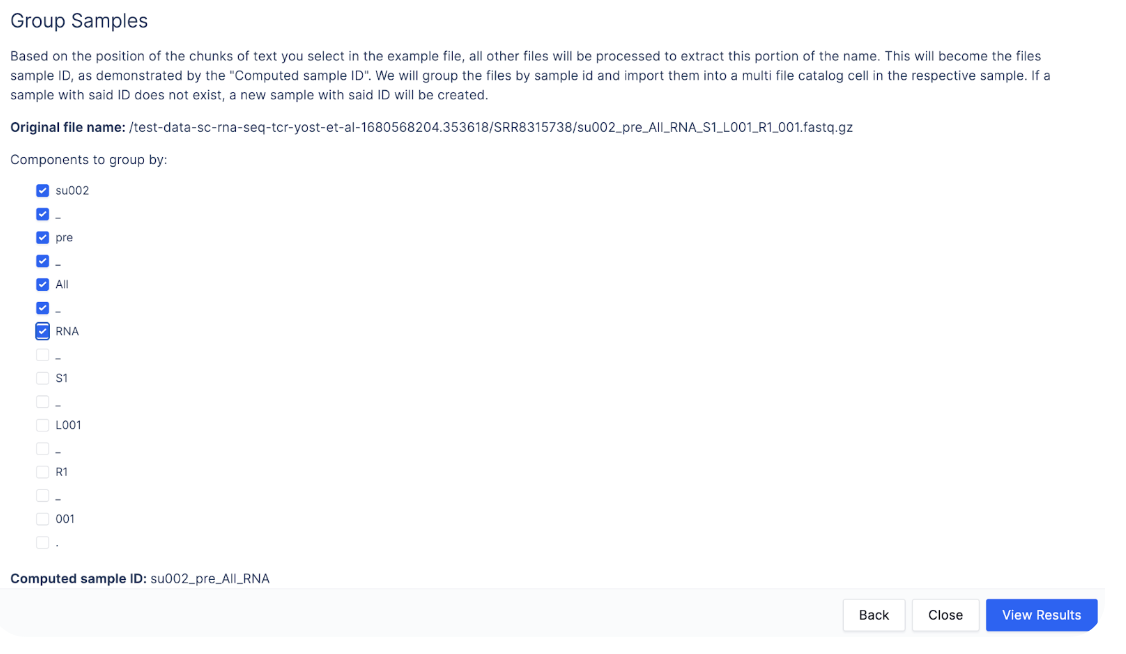

5
Here, we can check off the boxes from su002 to RNA to create the custom sample name `su002_pre_All_RNA`.
Click “View Results” to see the custom sample names.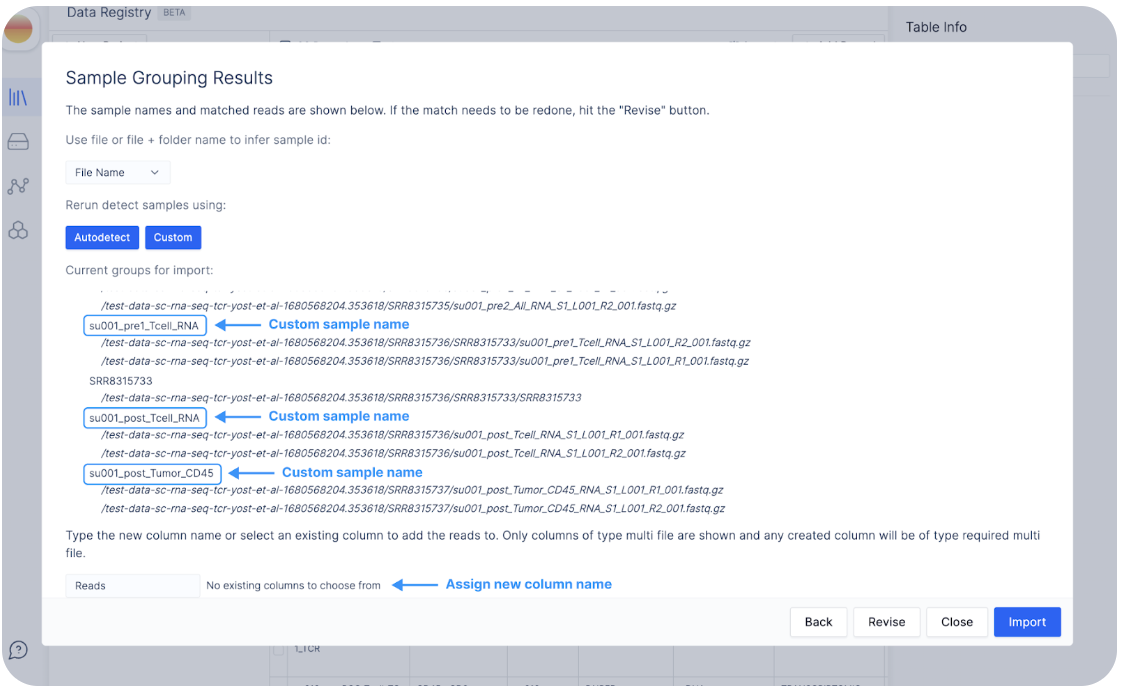

6
Next, we have to assign the sequencing files to a column.
Because there are no existing columns to choose from, let’s create a new column “Reads”.Click “Import” to start importing reads. A new column called “Reads” will be created and populated with the read files if they exist on Latch.